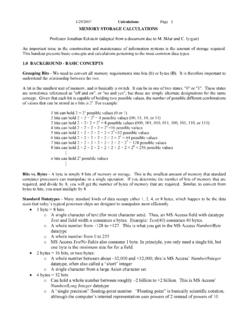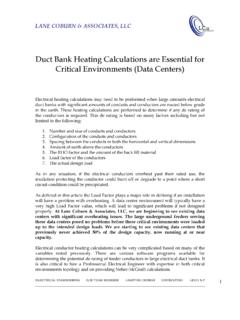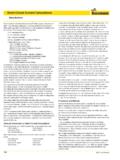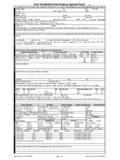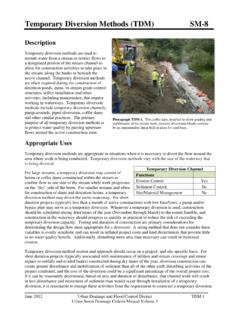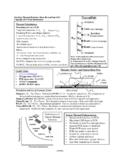Transcription of Kt/V Calculations for the Assessment of Hemodialysis …
1 Spectra Laboratories, Sycamore Drive Milpitas, CA 95035 800-433-37738 King Road Rockleigh, NJ 07647 is a trademark of the National Kidney Foundation, Inc. 2013 Fresenius Medical Care Holdings, Inc. All rights reserved. Spectra and the Spectra logo are trademarks of Fresenius Medical Care Holdings, Inc. or its affiliated companies. All other trademarks are the property of their respective Rev. 7/13 References1 Daugirdas JT: Second generation logarithmic estimates of single-pool variable volume Kt/V: An analysis of error.
2 J Am Soc Nephrol, 4:1205-1213, Keshaviah, PR, Hanson, GI, Berkseth, RO and Collins, AJ 1988. A simplified approach to monitoring in vivo therapy prescription. Soc. Artif. Organs, 34:620 National Kidney Foundation. 1997. NKF-DOQI clinical practice guidelines for Hemodialysis adequacy . Am. J. Kidney Dis., 30 (Suppl):S15 National Kidney Foundation. 2006. NKF-DOQI clinical practice guidelines for Hemodialysis adequacy, Update 2006 . Am. J. Kidney Dis., 48 (Suppl): S17 Depner, TA 1994.
3 Assessing adequacy of Hemodialysis urea modeling. Kidney Int., 45:1522 35. Kt/V Calculations for the Assessment of Hemodialysis AdequacyWe have found that the Keshaviah Quick Kt/V formula most closely correlates with both of the more complex Kt/V Calculations that Spectra offers - the Daugirdas II Natural Log and Depner Full UKM Kt/V (see Figures 2 & 3). Full UKMD augirdas II (Post BUN/Pre x t) + Natural Log [ x (Post BUN/Pre BUN)] x UF / WtJindal * * * *In(Pre/Pst) Full UKMD augirdas II (Post BUN/Pre x t) + Natural Log [ x (Post BUN/Pre BUN)] x UF / WtJindal * * * *In(Pre/Pst)
4 17 19 21 23 25 27 29 31 33 35 37 39 41 43 45 47 49 51 53 55 57 59 61 63 65 67 69 71 73 75 77 79 81 83 85 87 89 91 93 95 97 99 101 103 105 107 109 111 113 115 1171471013161922252831343740434649525558 6164677073767982858891949710010310610911 2115118121 Figure 2 Figure 3 Comparison of Kt/V Formulas to UKM Kt/V 1500 Patient ResultsComparison of Kt/V Formulas to UKM Kt/V to Full UKMD augirdas II (Post BUN/Pre x t) + Natural Log [ x (Post BUN/Pre BUN)] x UF / WtJindal * * * *In(Pre/Pst) Full UKMD augirdas II (Post BUN/Pre x t) + Natural Log [ x (Post BUN/Pre BUN)] x UF / WtJindal * * * *In(Pre/Pst)
5 17 19 21 23 25 27 29 31 33 35 37 39 41 43 45 47 49 51 53 55 57 59 61 63 65 67 69 71 73 75 77 79 81 83 85 87 89 91 93 95 97 99 101 103 105 107 109 111 113 115 1171471013161922252831343740434649525558 6164677073767982858891949710010310610911 2115118121 There are a number of dialysis adequacy Calculations published in the scientific literature that provide information regarding the efficiency of dialysis. These Calculations range from quick bedside Kt/V Calculations that require only a pre and post Blood Urea Nitrogen (BUN) result, to full kinetic modeling Calculations that require additional patient information to calculate the most accurate the National Kidney Foundation KDOQI Clinical Practice Guidelines recommend full kinetic modeling as the preferred method for determining dialysis efficiency4, simpler Kt/V equations that correlate with the Urea Kinetic Modeling (UKM)
6 Kt/V are also available. Equations that include natural log function are preferable because they more closely account for changes that take place during the dialysis session. The most common estimation of dialysis efficiency is the Urea Reduction Ratio, or URR. BUN is used as a marker for uremia. The ratio is calculated by taking the amount of BUN present after the dialysis session (post BUN) and dividing it by the BUN present prior to the start of the dialysis session (pre BUN), using the formula:URR (%) = 100 x (1 - (Post BUN/Pre BUN))The URR measures two points - the beginning and end of dialysis.
7 There is no urea in dialysate, so the differential between the patient s blood and the dialysate is greatest during the beginning of the session and least toward the end of the session. The URR is a simple average of this differential between the beginning and end of dialysis. However, this ratio is not static and changes over the course of the dialysis was first introduced in 1985 and incorporated the change in urea concentration over the time on CLINICAL PRACTICE GUIDELINES FOR Hemodialysis ADEQUACY, UPDATE 2006 GUIDELINE 2: METHODS FOR MEASURING AND EXPRESSING Hemodialysis DOSE The preferred method for measurement of the delivered dose is formal urea kinetic modeling.
8 Other methods may be used, provided they give similar results and do not significantly overestimate the modeled dose. Spectra Laboratories offers the following Kt/V Calculations for the Assessment of Hemodialysis adequacy:Quick Kt/V Calculations :Keshaviah *ln (Pre BUN/Post BUN)Patient Data Requirements for Kt/V Calculations :Kt/V CalculationsPre BUNPost BUNPre WtPost WtUFStart TimeStop TimeFrequencyScheduleDepner Full UKM Daugirdas II Natural Log Keshaviah Figure 1: Normogram4 Note that the Quick Kt/V calculation can be ordered for patients individually, as part of the patient s LTO, or on an account basis and reported any time a pre and post BUN result is of the above Calculations are designed for patients receiving dialysis three times per week, between 2 and 4 hours per session.
9 Patients receiving dialysis more than three days per week should use the Standard Kt/V. The table below outlines the patient information that is required for the different Kt/V Calculations . Quick Kt/V Calculations require only pre and post BUN patient values, whereas the more complex Kt/V Calculations require additional patient information, such as pre and post weight. In order to provide an easily calculated approximation of Kt/V, the URR equation was modified by measuring patient values, creating normograms of the patient data (see Figure 1), and establishing the calculation that best approximated the measured Kt/V.
10 These formulas, commonly referred to as quick or bedside Calculations , provide a simple means to arrive at Kt/V approximation without any additional information than the pre and post BUN. A quick calculation , requiring only a pre and post BUN but incorporating the logarithmic expression of the change, most easily approximates the calculated Kt/V. Full Kt/V Calculations :Depner Full UKM Refer to Reference #5 Daugirdas II Natural Log (Post BUN/Pre BUN x t) + [ x (Post BUN/Pre BUN)] x UF/WtBecause the Keshaviah Quick Kt/V formula also uses the natural log in its calculation , we have found it most closely correlates with both the complex Kt/V Calculations that Spectra offers - the Daugirdas II Natural Log Kt/V and the Depner Full UKM Kt/V.



